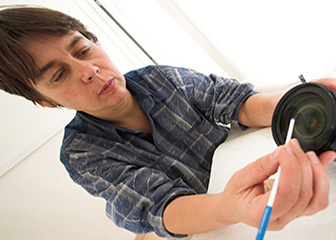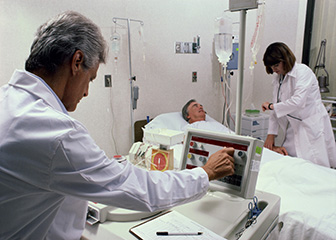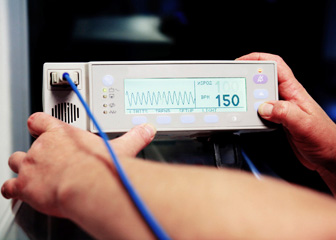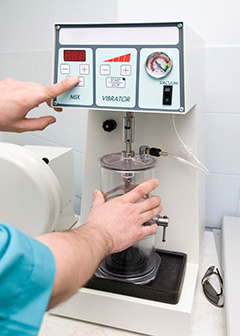How to Become a Medical Equipment Repairer About this section

Most repairers obtain an associate’s degree and receive moderate-term on-the-job training.
Employers generally prefer candidates who have an associate’s degree in biomedical technology or engineering. Depending on the area of specialization, and especially for advancement, repairers may need a bachelor’s degree.
Education and Training
Education requirements for medical equipment repairers vary, depending on a worker’s experience and area of specialization. However, the most common education is an associate’s degree in biomedical equipment technology or engineering. Those who repair less-complicated equipment, such as hospital beds and electric wheelchairs, may learn entirely through on-the-job training. Others, particularly those who work on more sophisticated equipment, such as CAT scanners and defibrillators, may need a bachelor's degree.
New workers generally start by watching and helping experienced repairers for 3 to 6 months, learning about one piece of equipment at a time. Gradually, new workers begin working more independently while still under supervision.
Each piece of equipment is different, so medical equipment repairers must learn each one separately. In some cases, this requires studying a machine’s technical specifications and manual. Medical device manufacturers also may provide technical training.
Medical equipment technology is rapidly evolving, and new devices are frequently introduced. Repairers must continually update their skills and knowledge of new technologies and equipment through seminars and self-study.
Certification
Certification is optional, but it allows medical equipment repairers to show that they have a level of competency that can make them more attractive to employers. It can also increase a repairer’s opportunities for advancement. Most employers, particularly in hospitals, often pay for their in-house medical repairers to become certified.
Some associations offer certifications for medical equipment repairers. For example, the Association for the Advancement of Medical Instrumentation (AAMI) offers certification in three specialty areas—Certified Biomedical Equipment Technician (CBET), Certified Radiology Equipment Specialists (CRES), and Certified Laboratory Equipment Specialist (CLEB).
Important Qualities
Dexterity. Many tasks, such as taking apart mechanical parts, connecting or attaching parts, and using handtools, require a steady hand and good hand-eye coordination.
Mechanical skills. Medical equipment repairers must be familiar with medical components and systems and how they interact. Often, repairers must take apart major parts for fixing and be able to put them back together when the work is complete.
Stamina. Standing, crouching, and bending in awkward positions are common when making repairs to equipment. Therefore, workers must be able to be physically active for long periods without tiring.
Technical skills. Technicians use sophisticated diagnostic equipment when working on complex medical equipment. They must be familiar with both the equipments’ internal parts and the appropriate tools needed to fix them.
Time-management skills. Because repairing vital medical equipment is urgent, workers must make good use of their time and do repairs quickly.
Troubleshooting skills. As medical equipment becomes more intricate, problems become more difficult to identify. Therefore, repairers must be able to find and solve problems that are not immediately apparent.






